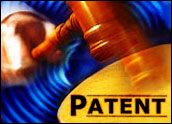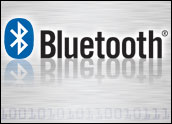
One of the most recent cases to go before the Supreme Court, KSR v. Teleflex, was also one of the most significant, at least to patent attorneys, as the basic standards used to grant a patent are now under review. It was a fitting end to 2006, during which a number of high profile patent disputes made their way into mainstream headlines.
Part 1 in this series looks at two major suits: KSR v. Teleflex, which is still undecided; and eBay v. MercExchange, in which the Supreme Court held that permanent injunctions should not automatically be awarded in patent cases.
They might have loved the decision or hated it, depending on their client orientation, but patent attorneys contacted for this article unanimously cited this case as having the biggest impact on patent law.
eBay was the rock star among patent cases in 2006. However, there were other cases that could have had a huge impact on how patent law is interpreted. Some of these arguments are still under consideration, even if the case in question is dead in the water.
Non-Decisions and Other Close Misses
In June, the Supreme Court dismissed Metabolite v. LabCorp, which challenged a ruling on a patent for a specific way to measure the presence of an amino acid called “homocysteine” in a patient’s blood or urine. The particular claim in the patent that was challenged was quite general, covering a standard testing process and then correlating the results to a possible deficiency.
Metabolite had licensed this patent from the patent management firm that owned it. LabCorp, in turn, licensed the patent from Metabolite, but then switched to a newer test that was developed by a different firm.
Metabolite and the original patent holder sued LabCorp for violating its patent. In 2001, a federal jury agreed that LabCorp was infringing the patent and it was ordered to pay US$7.8 million, a ruling that was subsequently upheld in the appeals court.
The Supreme Court turned down LabCorp’s request to hear the case. However, as it included a strongly-worded dissent, that may signal that it is looking to make policy-based adjustments to the patent system, Michael Shuster, Partner in Fenwick & West’s Intellectual Property Group and Co-Chair of the Firm’s Life Science’s Practice, told the E-Commerce Times.
These adjustment could well contract the scope of allowable claims based on a perception that “too much” patent protection is actually impeding progress and burdening health care costs, he said.
“The Supreme Court took the case to address whether this claim improperly claimed a ‘law of nature’ because any doctor would infringe the claim merely by looking at a test result once they knew the correlation between the analyte measured and the vitamin deficiency it reflected,” Shuster added.
Old Argument, New Cases
These particular issues, though, are by no means dead — they are largely the same put forth in the KSR case, which is re-examining how close an innovation can resemble an earlier one and how to decide when it is too close.
“The Metabolite case raised issues concerning the eligibility for patenting. [In other words] are patents on software, business methodologies and some other innovations permissible? The Supreme Court found a procedural flaw and that precise issue was not decided but some Justices opined nonetheless,” Raymond Van Dyke, a partner with Nixon Peabody, told the E-Commerce Times.
KSR will be decided this year, he noted. Another decision expected in 2007 will be the MedImmune case, Van Dyke added, which looks at whether a patent licensee can challenge the validity of patents under the license while honoring the license.
“This decision has taken the Court a long time to resolve and despite expectations of a decision [in late 2006], it too will come down in 2007. The effect here could affect the valuation of patents under a license,” he noted.
NTP v. Research In Motion
For better or worse, patent attorneys can thank the NTP v. Research In Motion case for introducing the word ‘patent troll’ into the general lexicon and more fundamentally, highlighting how easy it is for an upstart to challenge an established company. In short, it made patent law sexy.
NTP, a company founded by inventor Thomas Campana, who had obtained a number of wireless e-mail delivery patents, filed suit against Research In Motion after it declined to discuss licensing NTP’s technology. The first jury to hear the case found in NTP’s favor.
It then bounced back and forth between appellate review, the Supreme Court and back again to the trial judge, who had held off on imposing an injunction to the relief of BlackBerry users everywhere. That threat remained though and eventually RIM paid $600 million to settle the case.
Companies everywhere took note and went on the offensive.
“This case brought patent law to the attention of business leaders as well as stock analysts at a level not seen before in the tech industry,” Dennis Crouch, a visiting assistant professor at Boston University Law School told the E-Commerce Times.
This and many other recent cases in with which an e-commerce patent has been challenged by a small company has led to a steady call for reform by the software industry, he said.
“At every opportunity, today’s software market-leaders have called for reductions in the power of patents, increases in the difficulty of obtaining patents, and an enforcement bias toward companies that practice the patent.
Some see the proposed reforms as improving ‘patent quality’ while others see them as a way to squeeze out upstart competitors,” he explained.
Year of the Tech Patent Lawsuit, Part 1
























































Social Media
See all Social Media